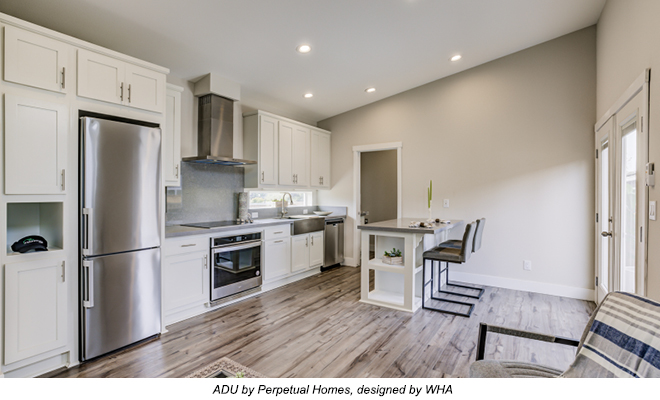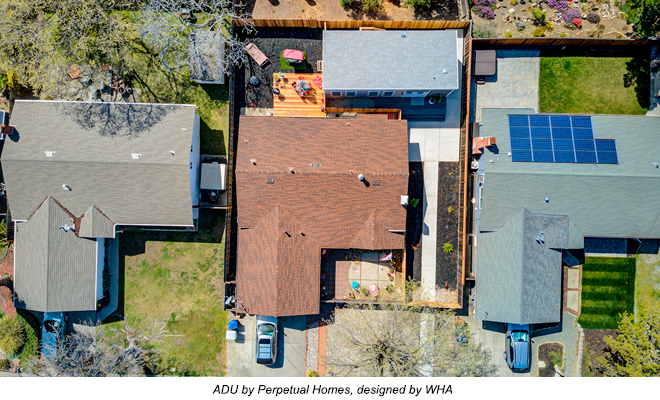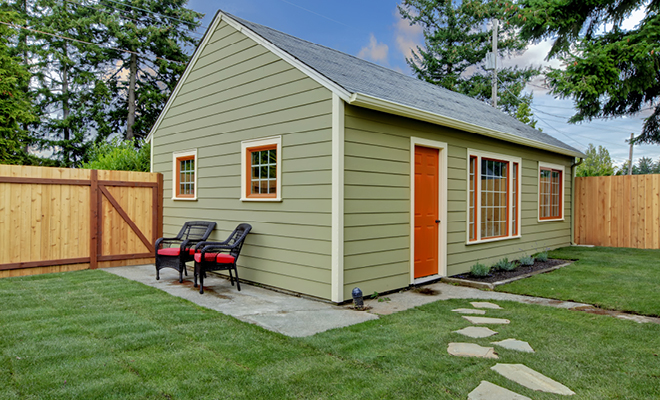Filling a Gap with ADUs
While California’s affordable housing crisis groans on with no clear resolution, ADU’s (Accessory Dwelling Units) continue to gain traction as a potential solution piece in this complicated housing crisis puzzle. Clearly, we are running out of space in our urban areas to build housing in general, which is one of the reasons clients trust WHA to design diligent infill projects. But ADUs have several advantages that impact housing supply in ways that brand new communities can’t. As a result, there are efforts to make ADUs a bigger part of the solution. Some advantages of ADUs include: you don’t have to buy land for an ADU – you can build onto your existing home or free-standing in the backyard or outdoor space; utilities are a fraction of the construction effort and cost because they’re already servicing the property; ADUs rarely disrupt the imageability and feel of a neighborhood–they’re subtle and concealed somewhere on the primary residence; best of all, construction costs can be kept to a minimum and savings for homeowners can be passed on as lower monthly rents to tenants. If the benefits are many, and the impacts are great, why haven’t ADUs taken California by storm? Well, some of us planners, architects, and policymakers, are taking a couple angles to promote them.


Over the Summer, I worked as a GIS technician with the Sustainable Systems Research Foundation (SSRF) in Santa Cruz to identify neighborhoods and properties with the potential for ADU construction; I used census, county, and city data to visualize characteristics like average income, parcel sizes, zoning regulations—trying to find places where ADUs would make the biggest impact. For the Santa Cruz housing market specifically, land costs are being driven up by spillover from Silicon Valley, but other metro areas are also struggling with housing supply. SSRF’s “ADUs in Our Backyards” (ADUB) is an initiative to streamline the entire process of building ADUs as well as establish uniquely ADU-oriented financing mechanisms. ADUB proposes an all-in-one process that provides pre-approved designs for ADUs which would cost less than custom designs and have an expedited city review. There have been other state and local efforts to employ this kind of housing supply strategy by means of legislation (there are numerous passed or pending bills in California regarding ADUs), amended approval processes, and creative financing solutions. It is clearly an idea with plenty of potential and interest.

Here at WHA, there are several ways we incorporate the potential of ADUs, as they exist somewhere between “small-scale infill development” and home renovation. In September, the WHA planning team worked collaboratively with the City of Westminster to produce easy to comprehend design guidelines and development standards. These interactive guidelines help homeowners understand and navigate the ADU approval process from start to finish including how to find your zoning and submit for plan check review. You can view the document by clicking on this link. As we continue designing and storytelling with WHA products, we can use our craft to address a problem that will be relevant for years to come.
Below are resources to learn more about ADUs and the processes they require, along with a breakdown of recent legislation in the state of California.
ADU Resource Center and Network: http://plus1house.org/
ADU Legislation Breakdown:
AB 1866: Housing: Density bonuses – Requires housing elements of jurisdictions to identify sites for 2nd units based upon relevant factors.
AB/SB 2299: Land use: housing and 2nd units. Specifies siting standards, eliminates parking requirements, and overrides any more restrictive local ordinances.
AB/SB 2406: Housing: junior accessory dwelling units. Regulations for Junior Accessory Dwelling Units: “a unit that is no more than 500 square feet in size and contained entirely within an existing single-family structure.”
SB 1069: Land Use-Zoning: allows ADUs in restricted housing zones, simplifies parking requirements, and regulates fire sprinklers & utility hookups.
AB 494: Land Use: Accessory Dwelling Units. Authorizes local agency to provide, by ordinance, for the creation of accessory dwelling units in single-family and multifamily residential zones.
SB 229: Accessory Dwelling Units: authorizes a local agency to provide, by ordinance, for the creation of accessory dwelling units in single-family and multifamily residential zones.
AB 68 & AB 69: Land Use: Accessory Dwelling Units: requires local ministerial approval or denial of ADU permit application w/in 60 days. Requires small home building standards governing accessory dwelling units smaller than 800 square feet.
SB 13: Accessory Dwelling Units: significantly reduces the barrier requirements a city can legally impose on ADU development including but not limited to parking requirements, size limitations, and fee reductions.
*Featured ADU by Perpetual Homes in Concord, CA*




Leave a Reply